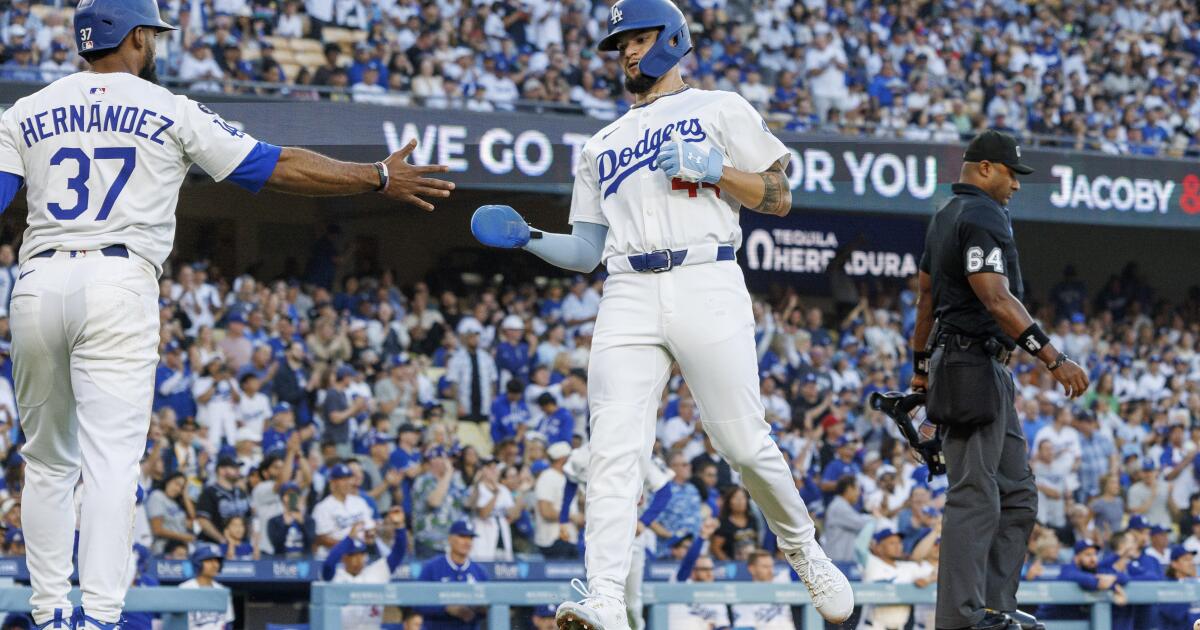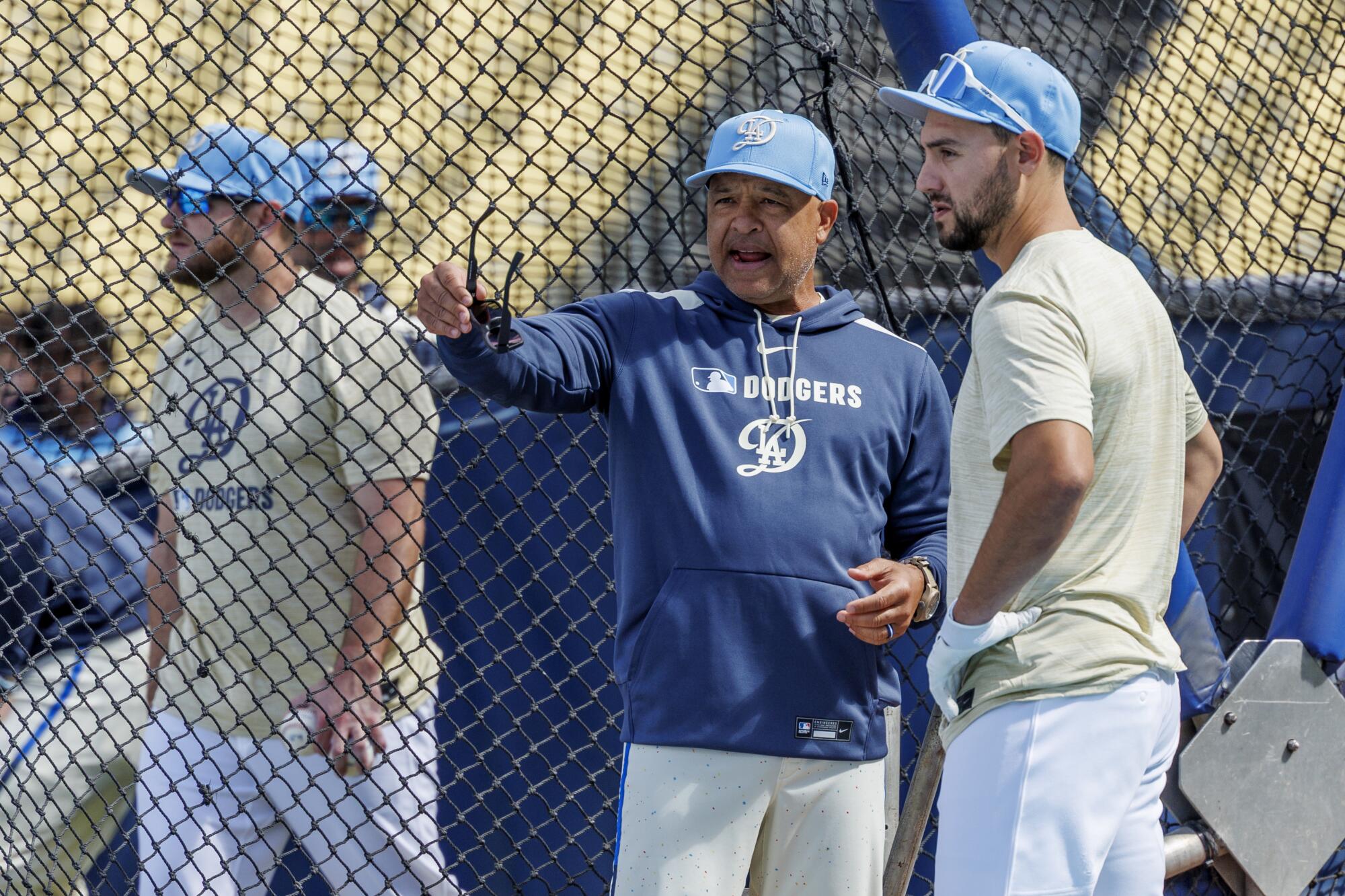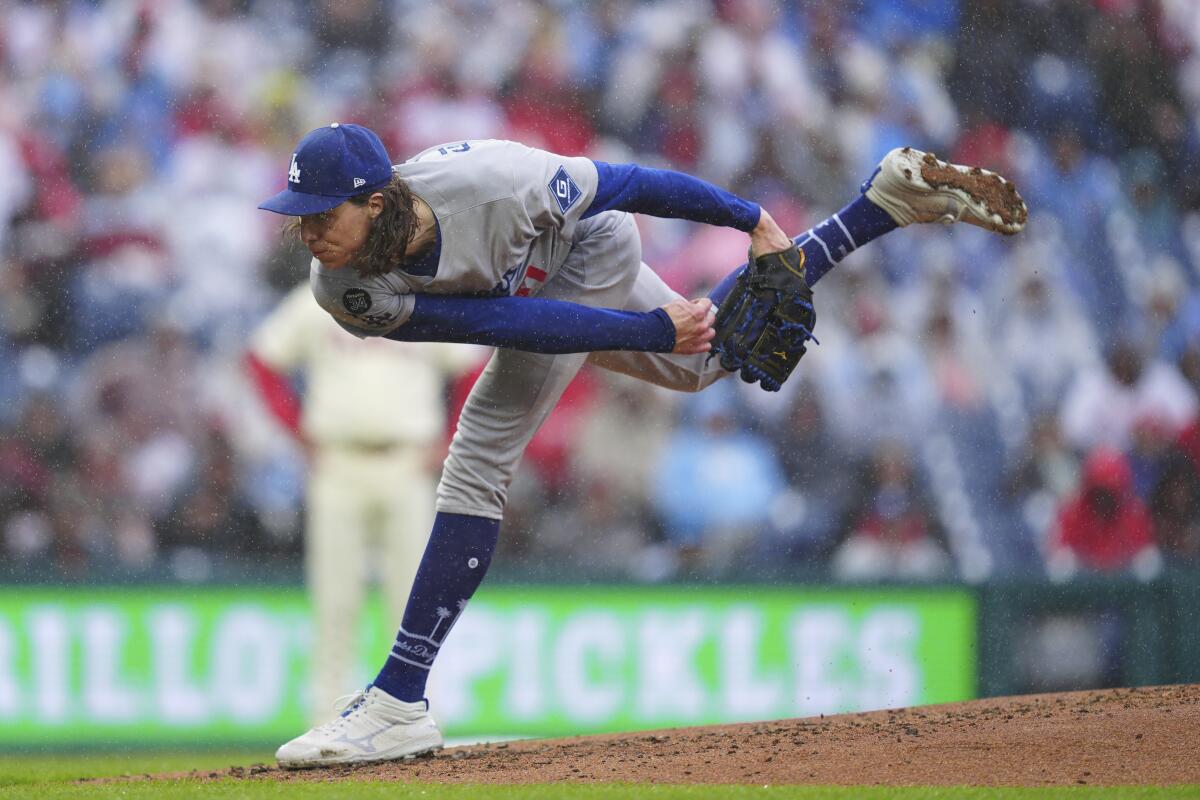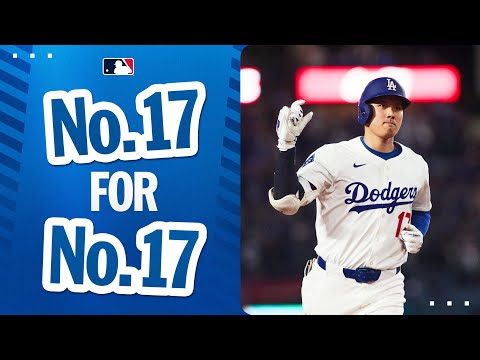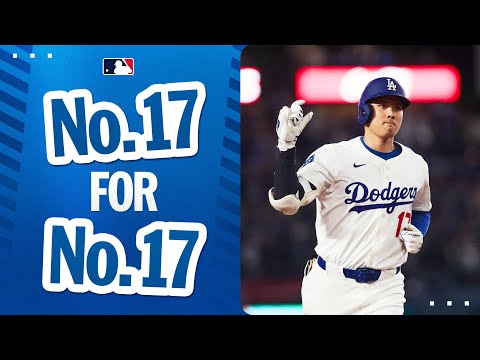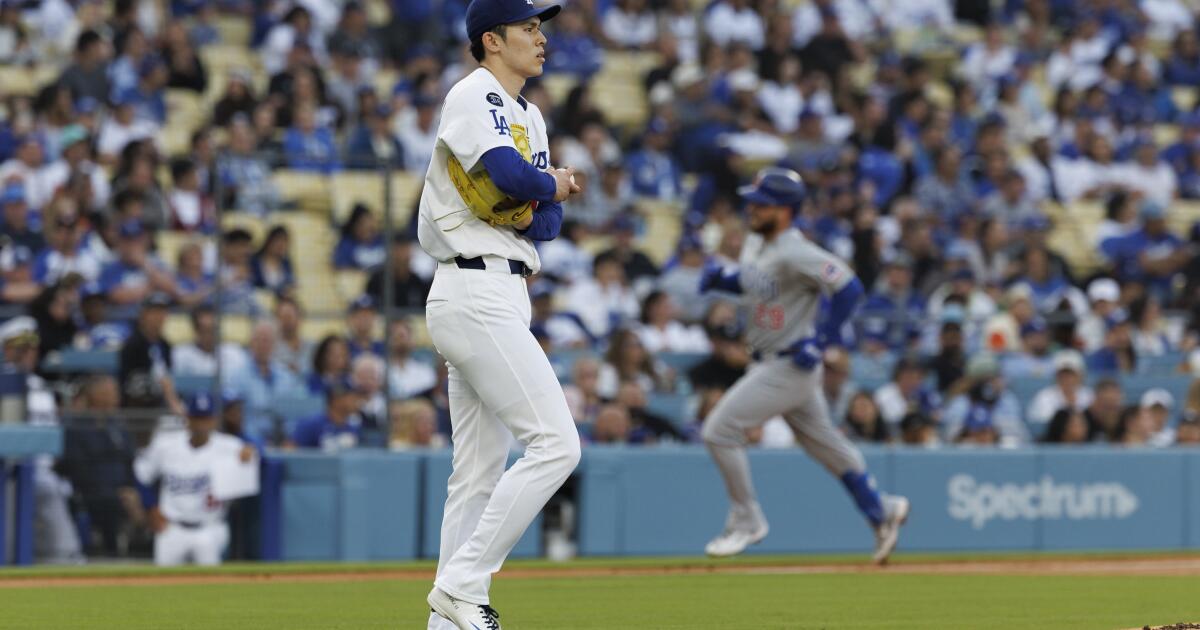When is the “fastest” something of a slow roll?
How about last week when pitcher Chris Sale was crowned the fastest to reach 2,500 career strikeouts?
Not to diminish Sale’s accomplishment: It took him fewer innings (2,026) to record No. 2,500 than any other pitcher in history. But because of injuries and a reduced workload — both huge, flashing signs of the times — he didn’t achieve the feat until his 16th season.
Sale was appropriately humble, telling reporters, “I appreciate it for what it is, but I try not to get too caught up in stuff like that right now.”
Perhaps he realizes it took others far less time to reach the 2,500 milestone, including the top two strikeout artists of all time: Nolan Ryan and Randy Johnson.
Strikeouts are a single lens in viewing the substantive changes over the last 100-plus years in how pitchers are utilized, record outs and withstand the burden. But they can be an instructive one.
Catch a whiff of this: A certain Dodger currently on the injured list strikes out more batters per nine innings than any other pitcher in baseball history, which in effect is another way to express Sale’s “fastest” title.
Blake Snell averages a record 11.1679 strikeouts per nine innings, edging out Sale, who is second all-time at 11.1056 among pitchers who average at least one inning per team game.
The believe-it-or-not distinction might explain why the Dodgers gave Snell a five-year, $182-million free agent contract last offseason. His wicked stuff that features a 96 mph four-seam fastball also could help explain why he’s on the injured list for the eighth time in the last eight seasons, this time out since April 6 with left shoulder inflammation.
Snell is the epitome of a highly valued starter in today’s game: He accumulates strikeouts at a higher rate than anyone else, gives up fewer hits than anyone else, and elicits only shrugs when someone points out that he has a grand total of one complete game in 213 career starts.
It is revealing that 13 of the top 20 pitchers on the all-time strikeout per innings list are active. The only one who didn’t pitch in the 21st century is Ryan at No. 19, just ahead of another believe-it-or-not name, Lucas Giolito.
Among the 33 pitchers to average more than a strikeout per inning, the only one whose career began in the 1950s has a statue outside Dodger Stadium: Sandy Koufax.
Koufax and Snell are two of 10 Dodgers among the 33, a clue as to what the Dodgers front office values in mound performance. Several of the names are less than luminary.
The others, from bottom to top: Lance Lynn (No. 32; 9.04), Rich Hill (No. 29; 9.12), Andrew Heaney (No. 25; 9.33), Clayton Kershaw (No. 16; 9.72), Trevor Bauer (No. 15; 9.82), Pedro Martinez (No. 12; 10.04), Yu Darvish (No. 7; 10.59) and Max Scherzer (No. 5; 10.65).
Note: Dodgers two-way star Shohei Ohtani averaged a mammoth 11.40 strikeouts per nine innings in six seasons with the Angels but hasn’t pitched enough to qualify for the all-time list. He has recovered from elbow surgery and is expected to return to the mound after the All-Star break for the first time since August 2023.
Sale’s accomplishment, then, is sustaining a near-record rate of strikeouts per nine innings for more than 2,000 innings, certainly worthy of note.
An equally valid definition of “fastest” to reach a strikeout milestone would be how long it took to get there. The pitcher that the 6-foot-6, left-handed Sale surpassed was his boyhood idol: Johnson, a 6-10, left-handed flamethrower who ranks second to Ryan on the career strikeout list with 4,875.
Johnson notched No. 2,500 in inning No. 2,108 — 82 more than it took Sale. But he did so in only his 11th season, five seasons “faster” than Sale.
Incidentally — and incredibly — Johnson was only halfway through his career. He retired in 2009 after 22 seasons with 4,135.1 innings and 303 wins.
Granted, Johnson was an anomaly, the only hurler ever to amass more than 200 innings and 300 strikeouts in multiple seasons well into his 30s. At ages 35-38 from 1999-2002, he averaged a staggering 354 strikeouts and 258 innings a season.
The only comparable hurler was Ryan (record strikeout total: 5,714), who also reached No. 2,500 in his 11th season, the milestone whiff coming in inning No. 2,287 when he struck out Andre Thornton of Cleveland while pitching for the Angels in 1978.
Ryan’s longevity was even more impressive than Johnson’s: 27 seasons from 1966-93, 5,386 innings and 324 wins. No current pitcher will come close to those numbers.
On the other end of the strikeout spectrum are Hall of Fame pitchers from more than 100 years ago who logged vast numbers of innings while striking out far fewer batters per inning. Velocity wasn’t nearly as high or as prized as it is today and pitchers were expected to complete games they started.
Sale ranks No. 40 on the all-time strikeout list, and he next will pass Christy Mathewson, who needed a prodigious 4,788 innings to log 2,507 strikeouts from 1900-16. Mathewson is far down the list of strikeouts per nine innings, checking in at No. 689 with 4.71.
Walter Johnson, the legendary “Big Train” out of Fullerton Union High, is third all-time with 5,914 innings and ninth with 3,509 strikeouts in a career spanning 1907-27. But he averaged just 5.34 strikeouts per nine innings, ranking No. 520, a few notches ahead of the less than legendary former Dodgers swingman Elmer Dessens.
Other fabled names associated with blazing fastballs compiled surprisingly low strikeout rates as well. Bob “Rapid Robert” Feller, for example, sits at 6.07 strikeouts per nine innings.
Kershaw, meanwhile, is on the cusp of reaching a milestone that very nearly guarantees entry into the Hall of Fame: 3,000 strikeouts. The career Dodger in his 18th season has 2,974, and he’s inching toward the finish line, having struck out six in three abbreviated starts since coming off the injured list two weeks ago.
Although Kershaw has consistently downplayed the significance of reaching 3,000, he told Tyler Kepner of the Athletic last week that it’s on his mind.
“Yeah, I’d be lying if I didn’t want to do it,” Kershaw said. “But I think the coolest part is the company you get to be a part of. You know what I mean? There’s just some really special names.”
They include, of course, Ryan and Johnson. Nineteen pitchers have reached the milestone and 17 are in the Hall of Fame, with Roger Clemens and Curt Schilling falling short for reasons that had nothing to do with strikeout totals.
Kershaw is considered a Hall of Fame shoo-in, his earned-run average of 2.51 the lowest of any active pitcher that meets the innings qualification and his 212 career victories an impressive number in today’s game.
Snell’s candidacy falls into the “way too early to tell” category. Yes, he is the only pitcher to win a Cy Young award in each league, and his 3.18 career ERA sparkles. And, of course, striking out more batters per nine innings than anyone else in history stands out on his resume.
Yet Snell is in his 10th season and he has just 77 wins. Hall of Fame starters with the fewest MLB wins are Dizzy Dean (150) and Koufax (165), the careers of both cut short by arm injuries.
Snell’s career should be far from over. He’s only 32 and his lucrative Dodgers contract doesn’t expire until after the 2029 season. But to have a shot at the Hall, Snell must fulfill the promise that prompted the Dodgers to sign him.
The only active pitchers besides Kershaw considered Hall of Fame locks are Justin Verlander and Scherzer, both hard throwers with the requisite strikeout totals.
Verlander, 42, has 3,457 strikeouts while averaging 8.98 per nine innings. He also has 262 wins — 46 more than Scherzer and 50 more than Kershaw, the next two active pitchers on the all-time list. No one else is close to 200.
Scherzer ranks fifth all-time in strikeouts per nine innings at 10.65, trailing only Snell, Sale, Robby Ray (another believe-it-or-not name) and Jacob DeGrom. Scherzer’s career total of 3,408 ranks 11th, just behind Verlander.
Gerrit Cole, 34, appeared on a Hall of Fame track before undergoing Tommy John surgery in March. He won’t pitch again until early next season, putting a long pause on his current totals of 153 wins, 2,251 strikeouts and 10.37 strikeouts per nine innings.
The only recently retired starter who might be rehearsing his Hall induction speech is another former Dodger, Zack Greinke, who posted 225 wins and 2,979 strikeouts along with a 3.49 ERA before retiring in 2024 after 20 seasons.
What about Sale, whose rebound from four years of debilitating injuries to win a Cy Young award with the Atlanta Braves was one of baseball’s best stories of 2024? He finished in the top five of Cy Young voting seven years in a row from 2012-2018, and his 3.04 career ERA is lower than any active starter besides Kershaw and DeGrom.
“He’s kind of doing Hall of Fame stuff,” Braves manager Brian Snitker told reporters. “That guy is probably as big a baseball fan as anybody, just the history of the game and the competition. He’s a ballplayer, and it’s really cool to watch.”
Yet Sale has only 141 wins, and that perceived blemish could be an interesting litmus test for Hall voters who profess to recognize that wins are much more difficult to accumulate now that teams routinely limit starters to six or fewer innings.
Strikeouts are king these days, and the Dodgers clearly know it.
